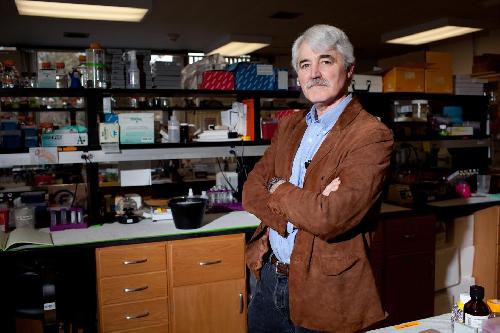AMHERST, Mass. - A group of seven independent researchers from universities and research institutions from Europe and the United States, including Thomas Zoeller, professor of biology at the University of Massachusetts Amherst, believe they have paved the way to end a nearly three-year-long stalemate over legal requirements by the European Commission to provide criteria identifying endocrine disrupting chemicals (EDCs) and put to rest claims of a lack of consensus on the issue among scientists.
In a commentary published today in Environmental Health Perspectives, the researchers argue that legislators can apply the same simple logic to EDCs that is used for the common identification and regulation of carcinogens, eschewing any issues of potency and deeming unnecessary the need for an impact assessment study, which has long been one of the main points of contention for the advancement of EDC regulation.
In the report, "Scientific Issues Relevant to Setting Regulatory Criteria to Identify Endocrine Disrupting Substances in the European Union," the authors demonstrate that there is wide acceptance of the World Health Organization definition of an EDC as an externally-derived substance or mixture that alters the function of the endocrine--or hormonal--system, and causes adverse health effects in an organism or its progeny, populations or subgroups.
 Thomas Zoeller and international collegaues believe they have found a way to end a nearly three-year-long stalemate over legal requirements by the European Commission to provide criteria for identifying endocrine disrupting chemicals. Credit: UMass Amherst
Thomas Zoeller and international collegaues believe they have found a way to end a nearly three-year-long stalemate over legal requirements by the European Commission to provide criteria for identifying endocrine disrupting chemicals. Credit: UMass Amherst
"Several years have been spent trying to issue scientific criteria defining a hazard that was actually defined in 2002 by a state-of-the-science report from the WHO," says Zoeller. "The claim of a 'lack of scientific consensus' could have been forged to justify delays in the publication of the scientific criteria as a way to postpone full application of the 2009 pesticide and 2012 biocide laws.
"We also insist that impact assessment studies should not be used as an argument for postponing the publication of a scientific definition, and are concerned that these scientific definitions might be distorted in order to modify the spirit of a law, thereby muddling science and policy, and postpone the application of existing laws. This postponement is all the more worrying since the publication of these scientific criteria is just one of the first steps towards formally identifying EDCs and providing more efficient protection of public health in the European Union."
The researchers recommend that the approach used for identifying other health hazards of equal concern, such as carcinogens or reproductive toxicants, should be used for endocrine disruptors. The researchers say that the three categories proposed by the European Commission as one option--"endocrine disruptors," "suspected endocrine disruptors" and "endocrine active substances" (substances altering the endocrine system with no evidence of the induction of an adverse health effect)--are sufficient for classification. They warn that including potency or dose-response considerations would modify the spirit of laws regulating pesticides and biocides, which call for a hazard-based, and not a risk-based, management of pesticides.
Finally, they state that conducting an impact assessment study to determine scientific criteria for EDCs would set a "dangerous precedent," since impact assessment studies are not meant to define hazards, but to quantify the health, social and economic impacts of regulation.
Suspected EDCs include metals, such as mercury; organochlorine pesticides, such as DDT or triclosan (used in toothpaste and soaps); other pesticides; dietary contaminants, such as bisphenol A (BpA); phenols, such as parabens (used as preservatives in cosmetics); or phthalates that can be found in perfumes, cosmetics, medical devices, polyvinyl chloride (PVC) plastics and rainwear. Some possible effects of some of these substances found in animal models and human studies include congenital malformations, breast cancer and neurodevelopment and behavior issues. The resulting health-related costs tied to EDCs in the European Union alone has been estimated to be in the €100-200 billion range.
Zoeller says that Europe is the only large economy in the world with an ambitious legislation on EDCs. In addition to other health hazards, such as carcinogens, mutagens or reproductive toxicants, the European Parliament has identified EDCs as a new type of hazard for health and the environment.
A strategy on endocrine disruptors was created in the European Union in 1999, and in 2009 and 2012 the European Parliament passed laws on pesticides and biocides stipulating that pesticides and biocides containing endocrine disruptors should be regulated based on hazard levels. The laws required the European Commission to publish criteria for identifying endocrine disruptors no later than 2013, which has not been done, and therefore, Zoeller says, the endocrine disruptor aspect of the pesticide and biocide laws could not be applied.
While the authors say they recognize that scientific uncertainty remains regarding the extent of health and environmental effects of EDCs and their impact at the population level and that there are also questions about the number of substances likely to be identified as EDCs, answering them is not required to provide scientific criteria defining EDCs.
source: University of Massachusetts at Amherst